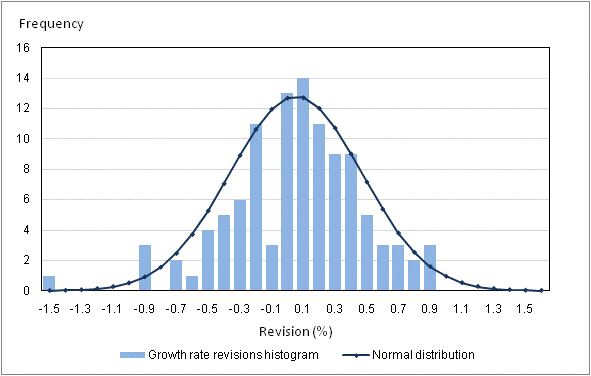我正在尝试找到一种方法将分布曲线/钟形曲线放入NVD3图表中。我在网上搜索了很多,但没有找到适合我的内容。也许这实际上是不可能的,但我认为值得问一下,对于任何寻找类似内容的人来说也是好的了解。
这是我需要的图表样例(在Google图片中找到)
从示例中可以看出,该线不需要第二个轴,因此不需要“条形和线状图组合”。我知道你可以直接用D3绘制到画布上,但我对此有点经验不足。
以下是我的代码和jsfiddle链接,如果有人想看的话。
var json = [{ "values": [{"label":"450-456", "value":0, "color":"#D62728"},{"label":"456-462", "value":0, "color":"#D62728"},{"label":"462-468", "value":0, "color":"#D62728"},{"label":"468-474", "value":0, "color":"#D62728"},{"label":"474-480", "value":0, "color":"#D62728"},{"label":"480-486", "value":1, "color":"#D62728"},{"label":"486-492", "value":5, "color":"#D62728"},{"label":"492-498", "value":3, "color":"#D62728"},{"label":"498-504", "value":5, "color":"#D62728"},{"label":"504-510", "value":6, "color":"#D62728"},{"label":"510-516", "value":9, "color":"#D62728"},{"label":"516-522", "value":6, "color":"#D62728"},{"label":"522-528", "value":1, "color":"#D62728"},{"label":"528-534", "value":0, "color":"#D62728"},{"label":"534-540", "value":0, "color":"#D62728"},{"label":"540-546", "value":0, "color":"#D62728"},{"label":"546-552", "value":0, "color":"#D62728"},{"label":"552-558", "value":0, "color":"#D62728"},{"label":"558-564", "value":0, "color":"#D62728"},{"label":"564-570", "value":0, "color":"#D62728"}]}];
nv.addGraph(function() {
var chart = nv.models.discreteBarChart()
.x(function(d) {
return d.label
})
.y(function(d) {
return d.value
})
.staggerLabels(true)
.tooltips(true)
.showValues(true)
.transitionDuration(250)
;
chart.yAxis
.tickFormat(d3.format('.0f'))
chart.valueFormat(d3.format('d'));
// REMOVE DECIMAL PLACES FROM Y AXIS
chart.forceY([0,10]);
d3.select('#chartDisribution svg')
.datum(json)
.call(chart);
d3.select('#chartDisribution svg')
.append("text")
.attr("x", '50%')
.attr("y", 10)
.attr("text-anchor", "middle")
.style("font-size", "14px")
.style("text-decoration", "underline")
.style("font-weight", "bold")
.style("height", "20px")
.text("DISRIBUTION");
nv.utils.windowResize(chart.update);
return chart;
});
分布前的原始数据 -
[518, 514, 512, 514, 518, 498, 510, 516, 520, 508, 504, 504, 517, 494, 492, 491, 515, 507, 492, 527, 509, 500, 491, 506, 517, 516, 518, 505, 514, 486, 516, 504, 503, 490, 515, 498]
如果需要更多信息,请询问。
谢谢

